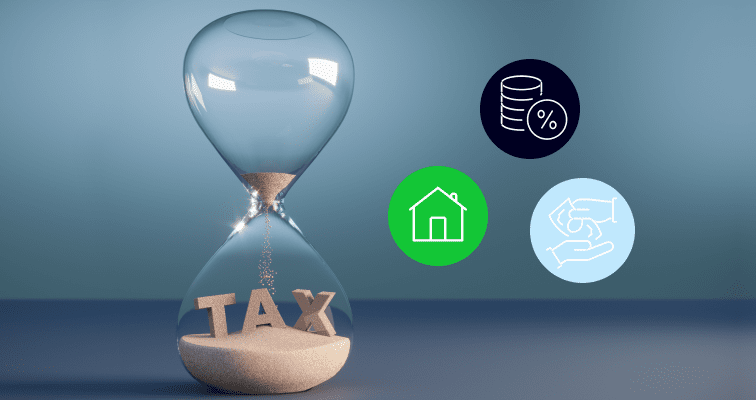In the UK, selling assets for a profit results in a “capital gain”, with HM Revenue & Customs (HMRC) mandating payment of capital gains tax (CGT) on certain returns. This guide offers insights into navigating the post-trade environment, covering CGT, calculation methods, and more.
Overall, buying and selling investments is a relatively straightforward process, with online brokers making it possible to buy a range of financial instruments within minutes. That being said, it is important for investors to recognise that their responsibilities extend beyond just choosing the right stocks.
Every time you sell assets, there is a possibility that you will need to pay capital gains tax (CGT). Find out what it is, how it works and what you need to know as an investor.
What is capital gains tax (CGT)?
Capital gains tax is a levy on gains made from selling a capital asset, calculated by deducting the purchase cost from the sale revenue.
In the UK, capital assets include shares, property and possessions greater than £6,000 in value. UK residents can be liable for CGT on both domestic and foreign gains, so CGT extends to stocks such as Tesla or NVIDIA.
It is your obligation to understand how capital gains tax works in the UK, and miscalculations or non-payment may lead to fines and penalties.

How is capital gains tax rate determined in the UK?
The rate of capital gains tax is determined by general guidelines, national tax rates and personal circumstances.
In the UK, your marginal tax rate is a percentage that indicates how much tax you will pay on an extra £1 of income earned. This rate will determine which of the market-side CGT rates apply to you.
Additional factors such as investment duration, asset class and inclusion in tax-saving funds also influence CGT calculation.
Developing a comprehensive understanding of how CGT works in the UK will ensure regulatory compliance, and could also reveal opportunities to minimise your overall tax burden.
Tip: Consider contacting HMRC directly to discuss CGT. They are the source of UK tax information, and offer free advice.
What assets are liable for capital gains tax?
Determine the scope of CGT by first identifying which investments are subject to it, and which are exempt. While not an exhaustive list, some of the most common liable and exempt assets in the UK include:
| CGT-liable assets: | CGT-exempt assets: |
|---|---|
| Shares and similar investments | Investments held in tax-free accounts such as Individual Savings Accounts (ISAs) and Personal Equity Plans (PEPs) |
| Most corporate bonds | Qualifying corporate bonds |
| Currency trades | Foreign currency held for personal use |
| Cryptoassets | Government gilts and Premium Bonds |
| Some foreign investments | Options and other derivative contracts to buy gilts |
| Main residences if they have been rented out, used for business or are very large | A main residence, in most cases |
| Property other than a main residence | Cars, motorbikes, and other vehicles |
| Personal items greater than £6,000 in value | Personal possessions less than £6,000 in value |
| Business assets, including machinery and registered trademarks | Most gifts to a spouse or a charity |
| Certain assets that could be sold for profit, and certain wealth-boosting cash flows | Winnings from betting or lotteries |
How does capital gain tax impact other investments?
Investors commonly encounter CGT when selling their stocks. Before selling any asset, thoroughly research whether CGT applies. Selling an asset subject to CGT triggers an event, which necessitates reporting the details of the gains in your tax return for that fiscal year. Timely payment of the required CGT amount to HMRC is essential.
Regardless of returns or losses, keeping detailed records of your trades is incredibly important. Information that is worth recording includes:

Share dealing transactions

Charges relating to any money borrowed to finance capital investments

Brokerage fees

Accounting and legal costs

Valuations, especially of illiquid assets

Property maintenance and modification costs

Statements relating to business costs
How do I calculate my capital gains tax?
Capital gains tax can be complicated, especially when calculating CGT liability across multiple asset groups or offsetting losses from previous years. There are two key points to consider:
- Taxable returns only: CGT is only levied on profits. Every UK resident has a capital gains allowance, allowing tax-free profits up to a certain threshold.
- Changing thresholds: The threshold at which you start paying CGT evolves over time in line with government policy changes. It is important to keep track of these changes, although they tend to be widely publicised in advance.

Tip: HMRC outlined that the UK CGT tax-free allowance would decrease from £6,000 to £3,000 in April 2024.
Tax allowance
If your capital gains exceed your CGT tax-free allowance, they are taxed according to your income tax bracket:
- Overall annual income below £50,270 incurs a 10% CGT rate
- If overall annual income exceeds £50,270, the CGT rate is 20%
- Residential property is taxed differently, with rates of 18% and 28% for various income levels
The impact of the holding period
Typically, the shorter your investment horizon (the period for which you hold your assets), the higher the tax rate. Gains made upon selling an asset within one calendar year of purchasing it are taxed as ordinary income. These are referred to as short-term capital gains and depend on your income tax rate, meaning they can be quite high. On the other hand, there are certain assets that, when sold after a year, might be taxed as long-term capital gains. The rate will be dependent on your CGT rate. This can encourage investors to think long-term about their investment decisions.
Tax calculations
Once you know your personal tax allowance, it is possible to calculate CGT obligations by following five key stages:
- Work out the basis: Calculate the asset’s purchase price plus any commissions or fees that were paid.
- Calculate realised capital gain: Subtract any transaction fees or commissions from the price at which the asset was sold.
- Determine the difference: Subtract the realised amount from the basis to establish if you have made a capital gain or a capital loss.
- Establish the total capital gain on all assets in your portfolio: Calculate the total gain on all assets, checking whether the total exceeds the annual allowance. If it does, calculate your CGT rate (dependent on your annual income) on earnings in excess of the threshold.
- Keep track of HMRC deadlines: Deadlines for filing returns and paying HMRC may vary across asset groups.
Tip: Always calculate both capital gains and losses, because loss-making trades can offset gains to reduce overall tax obligations.
How can I avoid paying capital gains tax on stocks?
While it is not possible to avoid paying CGT entirely, there are strategies that can be used to minimise a person’s annual CGT liability.
Take advantage of capital losses
Not all trades will be winners. Offset losses from unsuccessful trades against gains from profitable ones to reduce your net capital gain. Losses can also be carried forward to future years.
Bed and breakfast your gains
Your personal CGT allowance applies to a specific tax year. If you have positions with unrealised profits, you can “bed and breakfast” them by selling and then repurchasing them. This crystallises gains in a particular tax year, reducing future CGT liability.
Explore tax-efficient investment schemes
Investments held in Individual Savings Accounts (ISA) are exempt from CGT and income tax. You can invest up to £20,000 each year in an investment ISA, which not only offers the potential for tax-efficient returns, but also simplifies reporting requirements.
Self-Invested Personal Pensions (SIPPs), vehicles designed for retirement savings, are also exempt from CGT.
Crystallisation
Investors can strategically sell assets to manage CGT impact through a process known as crystallisation. By gradually liquidating assets over multiple tax years, it is possible to keep capital gains below CGT thresholds.
This approach may even influence initial asset choices. Lower risk stocks with lower price volatility can help to reduce the risk of price declines, while drip-feeding the sale of a position over multiple tax years.
Dividend income
In the UK, dividend income below the annual personal allowance is CGT-free, making dividend stocks an appealing investment option for some investors looking to book returns outside the scope of CGT.
Monitor your overall income
For those with annual income near the £50,270 threshold, keeping it below this level can help to reduce the CGT rate from 20% to 10%.
Transfer assets to family members
Transfers between spouses and civil partners are typically tax-free. This means that partners can work together to reduce CGT liabilities. This is beneficial when one partner is in a lower tax bracket, not working, or has not utilised their CGT allowance.
Seek professional advice
Consult a professional experienced in investment tax for personalised advice on your CGT liability. While tax planning is legal in the UK, “tax evasion” is a criminal offence.

Final thoughts
Understanding and managing capital gains tax is essential for UK investors. Familiarising yourself with CGT obligations not only ensures compliance with regulations, but also offers opportunities to reduce liabilities.
The CGT tax rates are straightforward, but thresholds and deadlines may change, thus requiring ongoing monitoring. Once you grasp the intricacies of CGT, incorporate them into your overall investment strategy.
Visit the eToro Academy and learn more about trading and investing.
FAQs
- How can I track my transactions and statements?
-
The financial institutions or brokers that hold your investments should provide detailed reports regarding your transactions and capital gains. If using an online broker, go to the platform’s admin area for the records needed to complete a CGT filing. Some brokers generate tax statements for their club members to make this process more user-friendly.
- What is the simplest way to invest and minimise CGT in the UK?
-
The easiest ways to invest in the UK while avoiding CGT are through CGT-exempt assets such as government bonds, or by utilising tax-efficient vehicles such as an ISA. ISAs are cost-effective and flexible, allowing annual investments of up to £20,000 and covering a number of popular instruments, including ETFs and shares.
- Who makes the payment of CGT to the tax authority?
-
In the UK, it is ultimately the responsibility of individuals to make CGT payments to HMRC. It is possible to delegate a professional advisor to calculate your liability, submit your filing and make the payment, but you would need to check that it is done in accordance with tax office deadlines. It is also worth noting that CGT on property transactions typically needs to be paid relatively quickly, often before the self-assessment filing, which is completed by January 31st of each year.
This information is for educational purposes only and should not be taken as investment advice, personal recommendation, or an offer of, or solicitation to, buy or sell any financial instruments.
This material has been prepared without regard to any particular investment objectives or financial situation and has not been prepared in accordance with the legal and regulatory requirements to promote independent research. Not all of the financial instruments and services referred to are offered by eToro and any references to past performance of a financial instrument, index, or a packaged investment product are not, and should not be taken as, a reliable indicator of future results.
eToro makes no representation and assumes no liability as to the accuracy or completeness of the content of this guide. Make sure you understand the risks involved in trading before committing any capital. Never risk more than you are prepared to lose.


